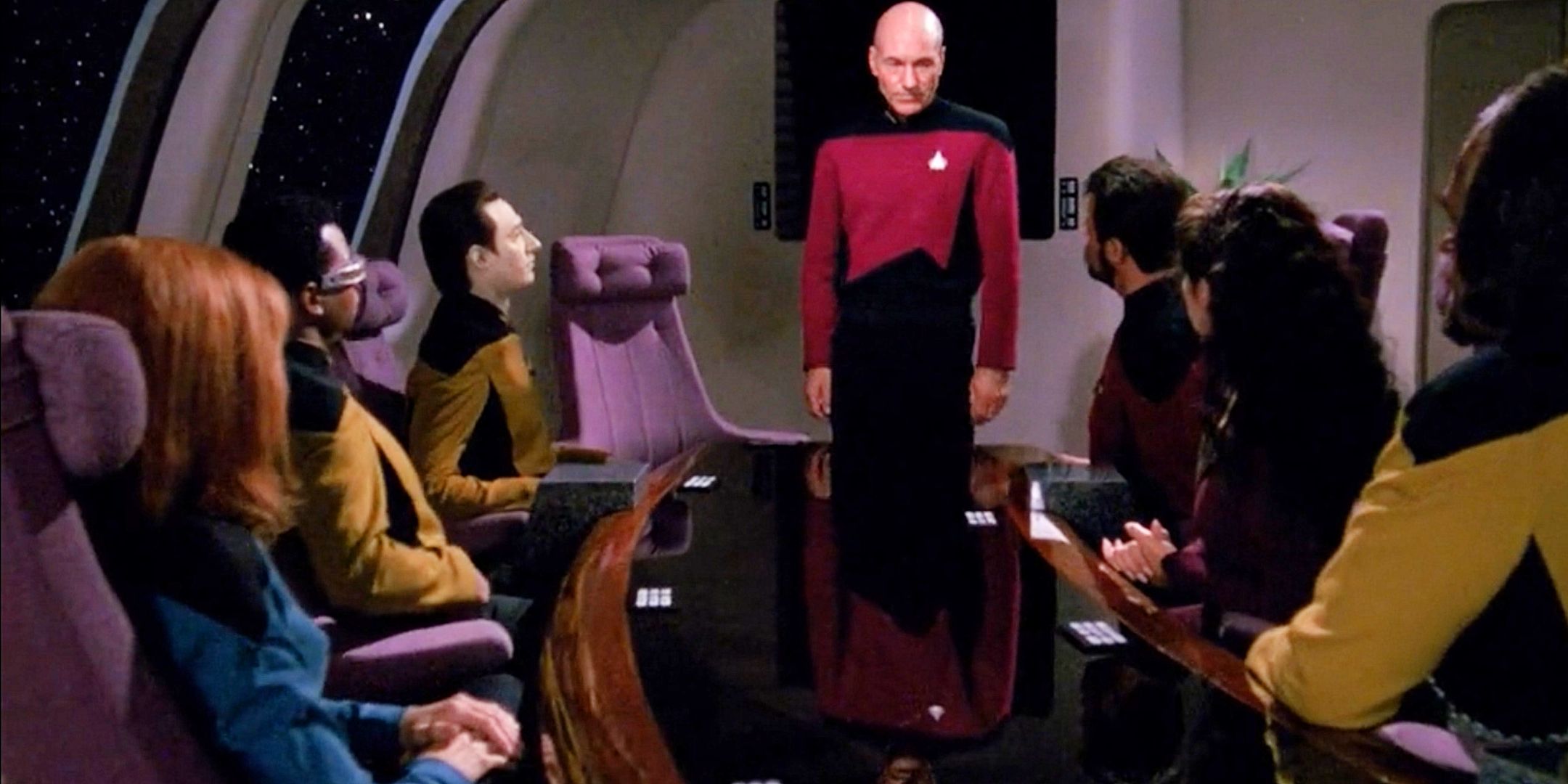While it fortunately recovered in its second season and only improved from there, Star Trek: TNG came very close to being canceled and never getting a chance to shine. It's not surprising that this nearly happened, given the poor quality of the season and its less-than-stellar stories. Due to conflicting visions for the series, some cringe-worthy scripts from a previous decade, and a cast that was still finding its footing, Season 1 of TNG almost failed to launch. Its recovery is what's important, but its still worth remembering where the series started out.
Season 1 of Star Trek: The Next Generation Was Hampered by Poor Writing and Awkward Storytelling

- By the end of the second season of Star Trek: The Next Generation, all but one writer who had started in Season 1 had left the show.
- While Season 1 is generally reviewed poorly by critics and fans, some individual episodes still receive praise.
- The Season 1 episode, "The Big Goodbye," is singled out in particular as a positive outlier of the season.
While the pilot, "Encounter at Farpoint," had its strengths, this was followed up with some memorably lousy episodes. The followup episode, "The Naked Now," was a rehash of an episode from Star Trek: The Original Series, and featured a great deal of Wesley Crusher, a character that failed to connect with most fans. The next episode, "Code of Honor," focused on a civilization meant to be inspired by African culture, but was found to be racist rather than respectful. From then on, most episodes of the season were equally off-putting in one way or another, with only one or two breaking the trend in any way.
It's not surprising that many episodes felt dated, either in their portrayals of women, other cultures, and issues, or in their relationship to the original series. Some of the writers on TNG had written for TOS years ago and some scripts for the new series were even adapted from unused ideas from decades prior. In short, the new series struggled to forge its own destiny and remained mired in the legacy of its predecessor. Apart from its scripts and its writers, this rut was also carved, in part, by the creator of Star Trek, Gene Roddenberry.
Star Trek: The Next Generation Initially Struggled with Conflict Behind the Scenes
- Producers of Star Trek: The Next Generation briefly considered starting Season 2 with the Enterprise being destroyed and replaced with a new ship and new crew.
- Conflict behind the scenes led to the characters of Tasha Yar and Beverly Crusher being written out of the show in the first season, but both would return in future seasons.
- Season 2 of Star Trek: The Next Generation was shortened by four episodes due to a writers' strike.
Gene Roddenberry explicitly told the writers of Star Trek: The Next Generation that their scripts couldn't involve disputes between members of the Enterprise's crew. A fundamental part of Roddenberry's vision for a future with a more enlightened and peaceful humanity, it made it difficult to craft interesting stories as conflict is at the heart of drama. It was also an ironic demand, as the set of the show was characterized by interpersonal conflict.
Famously, Denise Crosby, who played Security Chief Tasha Yar, left in the middle of the first season after growing dissatisfied with the writing on the show. Arguing that her character was not being developed, she chose to depart, leading to her character being killed off and Michael Dorn's Worf becoming the new chief of security on the Enterprise. Writers walking away from TNG was a common occurrence from the first season into the second. By the end of the inaugural season, things were looking bleak for the first attempt at a Star Trek revival and its future was uncertain. Indeed, there was talk of starting from scratch or scrapping the series entirely.
Fortunately, cancelation or dramatic reworking of the series were avoided. Instead, TNG got one more chance to make something of the pieces already in place. The cast, crew, and writers, took advantage of this opportunity and launched a stunning revitalization of the show.
Star Trek: The Next Generation Started to Redeem Itself in Season 2
The redemption certainly didn't happen overnight, and some episodes weren't much better than those in Season 1. Still, it became apparent during the second season that Star Trek: The Next Generation was improving. Season 2 included "The Measure of a Man," an episode that is considered one of the best of the entire series and, indeed, of all Star Trek. "Q Who" introduced the Borg, a brand-new race that would go on to become an iconic part of the franchise. By the end of the season, TNG had set a new tone and established a style that would carry through the rest of the series.
Where Season 1 raised serious questions about whether Star Trek could, or should, ever be expanded on from its initial run, Season 2 helped establish a true franchise. It demonstrated that the Enterprise could fly with a crew other than its first and someone other than James T. Kirk could command the bridge. It was the moment when all the elements of the show came together into something greater than the sum of their parts.
Despite its disappointing start, Star Trek: The Next Generation managed to recover and build a great series. Today, the first season is largely seen as an anomaly, a batch of bad episodes in an otherwise excellent show. Still, this first season isn't forgotten and deserves an occasional rewatch from die-hard fans.
Season 1 of Star Trek: The Next Generation introduced the characters and relaunched the Enterprise successfully. While it experienced more than a few hiccups along the way, it still survived long enough for the cast and crew to find their footing and right the ship. For that, it still holds a special place in the history of Star Trek.





